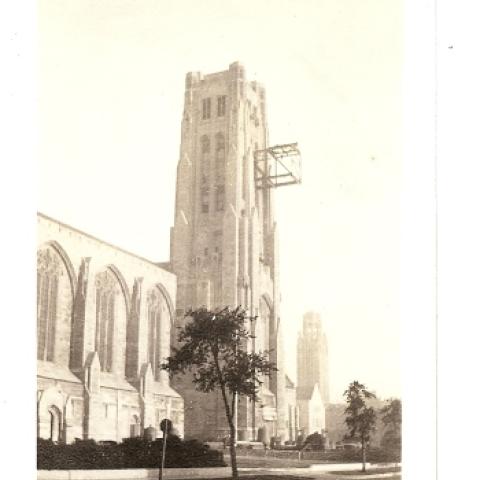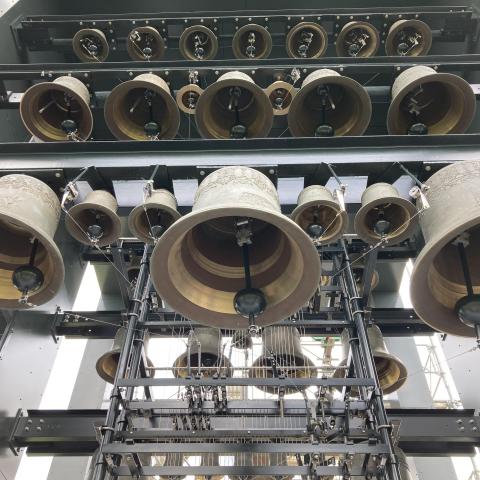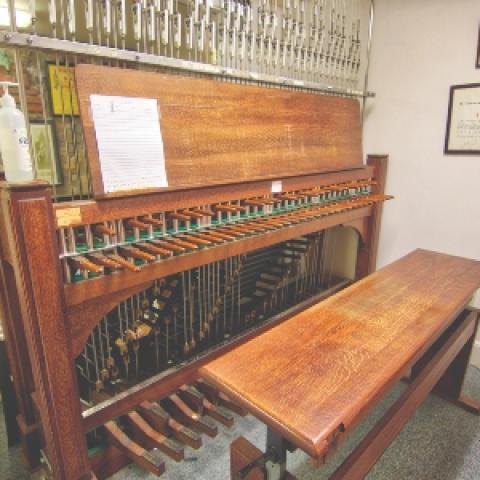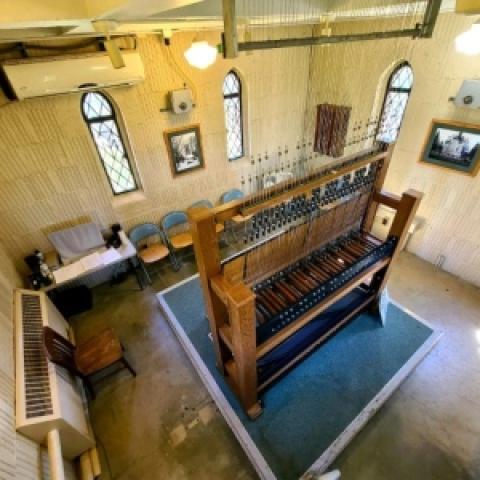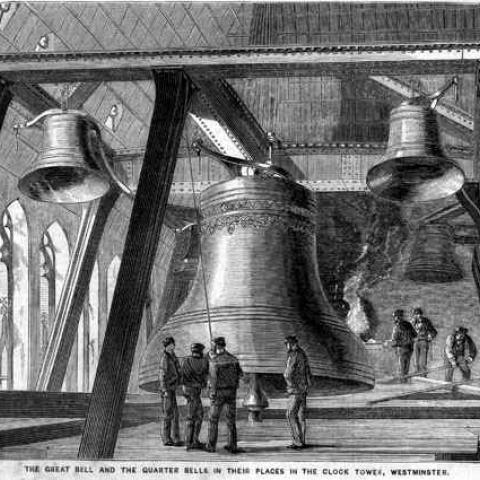
Laura Spelman Rockefeller Memorial Carillon, The Riverside Church, New York, New York
Perched 23 stories above the bustling streets of Manhattan, the world’s heaviest carillon rings out from The Riverside Church. This grand carillon boasts 74 bells, all housed in the church’s imposing Gothic tower overlooking the Hudson River. While its smallest bell weighs only ten pounds, its 20-ton bourdon sounds a low C and measures over ten feet in diameter, making it the largest and heaviest tuned carillon bell ever cast. A sister instrument to the carillon at the University of Chicago’s Rockefeller Memorial Chapel, The Riverside Church carillon is, like the Chicago instrument, an enduring gift from John D. Rockefeller, dedicated to his mother as a Laura Spelman Rockefeller Memorial Carillon.
The Riverside carillon originally began as a still-formidable 53-bell instrument cast by Gillett & Johnston and installed at the Park Avenue Baptist Church in 1925. This instrument, dedicated by Belgian carillonist Anton Brees, was known at the time as the Park Avenue Baptist Church carillon. Percival Price was later named carillonist. It also attracted significant media attention because it was played by Ruth Muzzy Conniston, one of the first female carillonists in North America, while Price was away studying at the Belgian carillon school in Mechelen. Articles about Conniston during this period emphasize the weight and size of the carillon, with reporters expressing shock and awe that such an immense instrument could be played (quite well, reportedly) by a woman. Following Conniston’s brief tenure, the job went to illustrious Belgian carillonist Kamiel Lefévere, who remained until 1960.
When the church moved to a new location on Riverside Drive in 1930, the carillon moved as well. In order to fit the new location’s much grander, 392-foot bell tower (the tallest church tower in the United States), the carillon was expanded to 72 bells—all by Gillett & Johnston—including the present 20-ton bourdon. At this time, it broke ground by becoming the first carillon in history with a range of more than five octaves, slightly preceding the installation of the Chicago Rockefeller carillon.
In 1955, 56 of the upper bells were sent to the Netherlands to be melted down and recast by the Van Bergen bell foundry, which is also when the final two upper bells were added to bring the total bell count up to the present 74. However, in the early 2000s, these 58 Van Bergen bells were removed from the carillon and completely replaced by bells cast by Whitechapel when the instrument underwent a multi-year restoration. In recasting these 58 bells, Whitechapel copied the original Gillett & Johnston profiles for some of the lowest bells and used modern profiles for the rest. Also, in the course of this renovation, the pneumatic assist previously used for the largest bells was removed entirely.
Throughout its 98-year history, the Riverside carillon has employed many notable carillonists, including those mentioned above as well as James A. Lawson (1960–1989), Joseph Clair Davis (1990–1998), and Dionisio A. Lind (1999–2018); the latter was the world’s first Black professional carillonist, according to University of Michigan carillonist Tiffany Ng. In the present day, the bells are played for Sunday services and special services by Charles Semowich (carillonist), Lynnli Wang, and Carla Staffaroni (assistant carillonists). Along with regular hour and quarter-hour strikes and a weekly swinging peal, there is a carillon recital every Sunday afternoon at 3:00 p.m. During the summer, the church hosts a carillon recital series of five concerts by guest and local carillonists.

